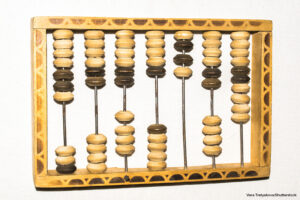
A Plan for Peace and Safety
After the mass shooting at Marjory Stoneman Douglas High School in Parkland, Florida on Valentine’s Day in 2018, students across the United States came together to protest gun violence. On March 24, 2018, the group marched on Washington, D.C., with over 880 sister marches taking place at the same time across the country and around the world. The goal of these protests was to urge lawmakers to create stricter gun-safety legislation.
Now, in the wake of mass shootings in El Paso, Texas, and Dayton, Ohio–and with Congress still not taking action to address gun violence–the group has gone from protesting gun violence to trying to find a way to stop it. To that end, the activists have come up with a proposal called A Peace Plan for a Safer America. The plan has three main goals: to cut the number of gun deaths in half over the next decade; to push for stricter standards for gun ownership (including “red flag” laws and tighter licensing procedures); and to create stronger laws to control gun violence. Other suggestions in the plan include instating a national firearm “buy-back” program and creating essentially a new cabinet position for someone who would report directly to the president about guns and gun-related issues.
Opponents are concerned that the new plan would violate their Second Amendment rights. They also argue that stricter laws won’t do any good because criminals will still find ways to purchase guns illegally anyway. But supporters of the plan point to the fact that 100 Americans die from gun violence every day, and insist that such a plan is long overdue. So far, the plan has been endorsed by Democratic presidential hopeful Beto O’Rourke of Texas, though other Democratic candidates are expected to follow suit.
What Do You Think? What is a “red-flag” law? Would you agree with instituting such a law in your state? Why or why not?
Democrats Narrow the Field
So far, there have been two Democratic primary debates. The third one is coming up in September. But what will it look like? Hard to say yet, but one thing is for sure: it won’t have as many candidates on stage.
The first two debates were unusual for the simple reason that the format had to change to accommodate an unprecedented twenty candidates–which spread each debate into two different nights, with ten candidates on stage per night. But in order to qualify for the third round of debates, the rules are stricter: each candidate must have received donations from at least 130,000 different people from twenty states. They must also have reached at least 2 percent on four major polls.
So far, ten of the candidates have done so: Joe Biden (former vice president); Sen. Cory Booker (New York); Mayor Pete Buttigieg (South Bend, Indiana); Julian Castro (former HUD Secretary); Sen. Kamala Harris (California); Sen. Amy Klobuchar (Minnesota); Beto O’Rourke (former Texas representative); Sen. Bernie Sanders (Vermont); Sen. Elizabeth Warren (Massachusetts); and entrepreneur Andrew Wang. If one more candidate qualifies, pushing the total to eleven, then the debate will once again need to stretch to two nights.
Rep. Tulsi Gabbard (Hawaii); business executive Tom Steyer; and spiritual guru Marianne Williamson have all reached the required level of donors, but not the polling requirement. Sen. Michael Bennet (Colorado); Gov. Steve Bullock (Montana); Mayor Bill de Blasio (New York City); John Delaney (former Maryland representative); Sen. Kirsten Gillibrand; Mayor Wayne Messam (Miramar, Florida); Rep. Tim Ryan (Ohio); and Joe Sestak (former Pennsylvania representative) have not yet reached either of the qualifications.
Rep. Seth Moulton (Massachusetts); Gov. Jay Inslee (Washington); and former Gov. John Hickenlooper (Colorado) have all dropped out of the race.
Dig Deeper To help you keep all of the Democratic presidential candidates straight, create a chart containing the following information: the candidate’s name (and title), their state, and the qualifications they have reached for the third round of debates.
What’s In My Water?
You’re probably already well aware of the harmful environmental effects of plastic drinking straws, bags, food containers, and other single-use plastics. These items don’t break down (biodegrade) over time the way cardboard and paper do. Instead, they break into smaller and smaller pieces, called microplastics, which never actually go away. And scientists have already begun detecting microplastics in our oceans and freshwater lakes and streams, as well as in our drinking water, food, and air–and even in the rain.
So, should we panic? Not necessarily. According to a new study conducted by the World Health Organization (WHO), there is no evidence to support the idea that microplastics are harmful to human health. In fact, WHO scientists say that a much greater concern remains inadequately treated drinking water, which can be contaminated with human or animal waste and cause widespread disease.
Does this mean that we should all start tossing our plastic bags into the ocean? No way. First off, WHO scientists are quick to admit that this is only the first report on the effects of microplastics on human health and that more research needs to be done about microplastics in drinking water before they can reach any permanent conclusions. Also, the study says only that the current level of microplastics in the water isn’t harmful to human health; it doesn’t say anything about what will happen if the microplastic level continues to grow at its current rate. More microplastics in the water could also cause widespread harm to aquatic ecosystems. The good news is that wastewater treatment, such as filtration, can remove more than 90 percent of microplastics in water, but not every country has access to this technology.
Dig Deeper Scientists can differ on the specifics of what exactly the term “microplastic” means. Using internet resources, come up with a definition.
An Ancient Tool Revisited
As you prepare to go back to school this fall, you are probably busy shopping for the usual school supplies, such as notebooks, pens, erasers, and . . . an abacus? For some students in Japan, an abacus would not be an unusual purchase, as the abacus is still taught in many private schools. Moreover, every year, the City of Kyoto, Japan hosts the All-Japan Abacus Championship. The contest draws in more than 800 participants from across the country, as well as a few from South Korea.

So what exactly is an abacus? Called “soroban” in Japan, it’s a rectangular wooden frame with metal rods running from one end of the frame to the other. By sliding beads up and down the rods, Japanese schoolchildren are able to determine answers to both simple and incredibly complex mathematical problems. It’s been a common tool for performing calculations in Japan since the 15th century, and it was taught in public schools until the early 1970s, when it was replaced with computers and calculators.
Now, however, some Japanese educational experts are pushing to bring back the abacus to public school classrooms. Some say that it helps build students’ confidence when they become fluent at using the abacus as a tool and can calculate complicated mathematical problems quickly and accurately. Others say that promoting the use of the abacus in schools helps preserve traditional Japanese culture. In the meantime, schoolchildren can take weekend and evening classes, or join clubs, to help them use the tool effectively.
